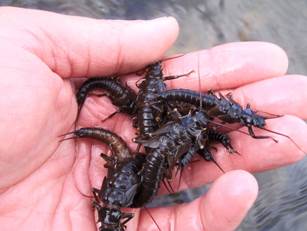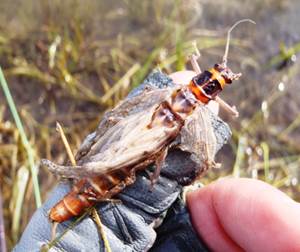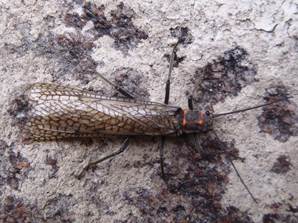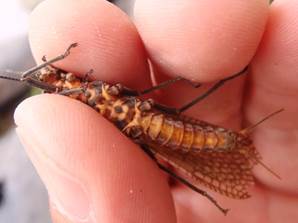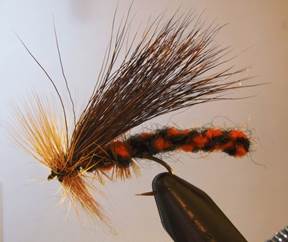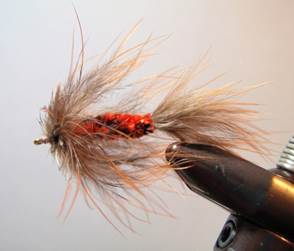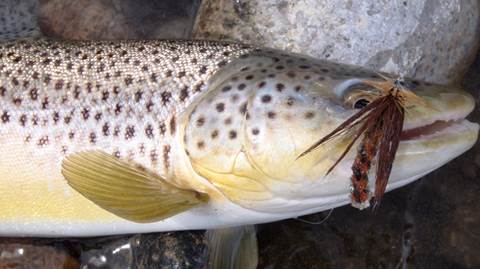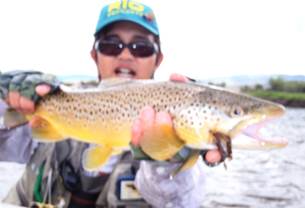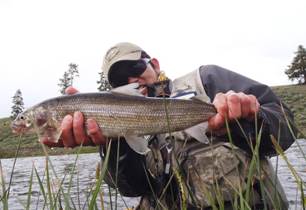FLIES FOR YELLOWSTONE COUNTRY
Salmonfly
One of the first major hatches of the season on many rivers in the western United States is the Salmonfly hatch. This hatch starts on most rivers in late June to early July on certain rivers. The hatch unpredictable but even if the hatching insects fail to appear in good numbers the nymphing along banks is very effective.
|
|
|
|
Rivers
It's said that the anglers follow the hatch. As the hatch proceeds upstream, hordes of anglers follow. I think I can say it's true on Madison River, which is notoriously famous for this hatch. I have been there. Nowadays, I sneak into the section that other anglers have vacated and fish with caddis and mayfly hatches with occasional left-over Salmonflies and Golden Stones! The Yellowstone River is dependent on snow accumulation from the winter and the runoff clarity in spring. It tends to be later than other rivers in my area. Timed right, it can be very good!
I have several spots in Yellowstone Park (slightly being ambiguous to protect my spotsJ?) where, at that time of year, it's not difficult to find a stretch to fish without being surrounded. I guess most anglers are targeting the Madison in Montana.
Regardless of rivers and sizes of trout, it's simply spectacular to witness trout rise to our big dry-flies. No wonder it's an easy addiction that attract anglers year after year from all over the world.
Special Flies:
There are countless adult dry patterns on the market. However, many patterns catch people and their eyes first. Some are ready to flutter in the air or even about to crawl on our arms! However, trout often prefer simple patterns. They are waiting for the female flying back to deposit eggs into the river - a vulnerable stage. Males and females that have been exhausted after they've completed their purpose - mating - will fall into rivers and get drowned. Those are much easier than chasing fluttering adults. Hence patterns that sit low and quiet on the water surface are much more effective. They tend to be simpler appearance than heavily constructed modern ties. But never judge a fly by the cover!
|
|
Yamamoto's Two-Mix Salmonfly
|
Yamamoto's Brindle Sparrow
|
How to Fish:
Two-Mix Salmonfly is the low-riding dry-fly with subtle silhouette. But also after the drift, let it get sucked under water and drowned (two purposes in one pattern, hence the name). Furthermore occasional twitches and rhythmical retrieves can trigger violent bites underwater, which are visible! It does look old-school and too simple, compared to modern heavily constructed patterns, I definitely have stronger faith on this one! Brindle Sparrow has been great success both as a nymph under an indicator and as a large soft-hackle to swing. Apparently I owe this pattern to Jack Gartside Sparrow. I just used variegated chenille, in place of dubbing, to express more like Salmonfly. Combination rig with these two patterns is most effective!
|
|
|
|
Satoshi Yamamoto, https://leftyangler.blogspot.com, is a guide and a fly-dresser in Livingston, MT.

